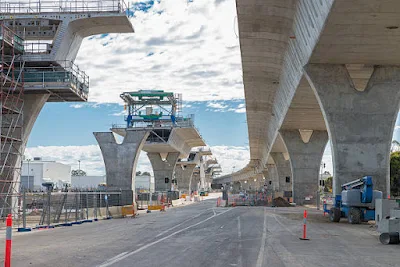Why RCC is used in Construction Structures?
Table of Contents
Introduction
Reinforced Cement Concrete (RCC) is a composite material composed of cement, aggregate (such as sand, gravel, or crushed stone), and steel reinforcing bars. RCC is widely used in the construction of structures including as buildings, bridges, dams, industrial structures, high-rise buildings, sports stadiums, water tanks and so on.
Reinforced Cement Concrete Structures
High-rise buildings

High-rise buildings are a common type of RCC structure. Reinforced cement concrete is widely used for the construction of high-rise buildings due to its strength, durability, and fire resistance.
Benefits of using RCC in high-rise buildings
RCC is a strong and durable material, capable of supporting heavy loads and resisting seismic activity.
Fire resistance
Concrete has good sound insulation properties, reducing the transmission of noise between floors and units.
Cost-effectiveness
RCC construction can be a cost-effective solution for tall building construction, especially for buildings with large floor areas.
Aesthetic appeal
RCC buildings can be designed and constructed with a variety of finishes, colors, and textures to match the architectural style of surrounding buildings.
Bridges

Bridges are a common type of RCC structure. Reinforced cement concrete bridges are widely used for roadways, railways, and pedestrian walkways.
Benefits of RCC bridges
RCC bridges are highly resistant to weathering, corrosion and deterioration, making them long-lasting.
Strength
Reinforced cement concrete is a strong and durable material, capable of supporting heavy loads and resisting seismic activity.
RCC bridges can be designed and constructed to match the architectural style of surrounding buildings and landscapes.
Cost-effectiveness
RCC bridges are often a cost-effective solution for bridge construction, especially for longer spans.
RCC bridges are easy to maintain, as they don't require any special coating or treatment to keep them in good condition.
Industrial structures

Industrial structures are a common type of RCC structure. Reinforced cement concrete is widely used for the construction of industrial buildings due to its strength, durability, and fire resistance.
Benefits of using RCC in industrial structures
StrengthConcrete has good fire resistance, making it a safe material for industrial structures.
RCC can be designed and constructed in a variety of shapes and sizes, making it suitable for a wide range of industrial applications.
RCC structures are low maintenance, as they don't require any special coating or treatment to keep them in good condition.
Dams

Dams are a common type of RCC structure. Reinforced cement concrete dams are widely used for water storage, irrigation, hydroelectric power generation, and flood control.
Benefits of using RCC in dams
StrengthRCC is a strong and durable material, capable of withstanding the pressure of large amounts of water.
Water tightness
Concrete is a non-porous material, preventing the flow of water through the dam structure.
Resistance to erosion
Concrete has good resistance to erosion, making it suitable for use in dam construction.
Cost-effectiveness
RCC construction can be a cost-effective solution for dam construction, especially for larger dams.
Longevity
RCC dams are long-lasting, as they don't require any special coating or treatment to keep them in good condition.
Water tanks

Water tanks are a common type of RCC structure. Reinforced cement concrete water tanks are widely used for storing potable water.
Benefits of Water tanks
Durability
Hygiene
Concrete is a non-porous material, preventing the growth of bacteria and algae.
Aesthetic appealRCC water tanks are easy to maintain, as they don't require any special coating or treatment to keep them in good condition.
Sports stadiums

Sports stadiums are a common type of RCC structure. Reinforced cement concrete is widely used for the construction of sports stadiums due to its strength, durability, and fire resistance.
Benefits of using RCC in sports stadiums
StrengthRCC can be designed and constructed in a variety of shapes and sizes, making it suitable for a wide range of sports stadium designs.
Cost-effectivenessRCC structures are low maintenance, as they don't require any special coating or treatment to keep them in good condition.
Conclusion
RCC is a versatile building material that is widely used in the construction of various types of structures due to its strength, durability, and ability to withstand the effects of weather and natural disasters. The reinforcement of steel bars within the concrete matrix increases its tensile strength, which enables it to resist bending and cracking under stress. So It is an important element in modern construction and its use helps ensure the safety and longevity of structures.

Post a Comment